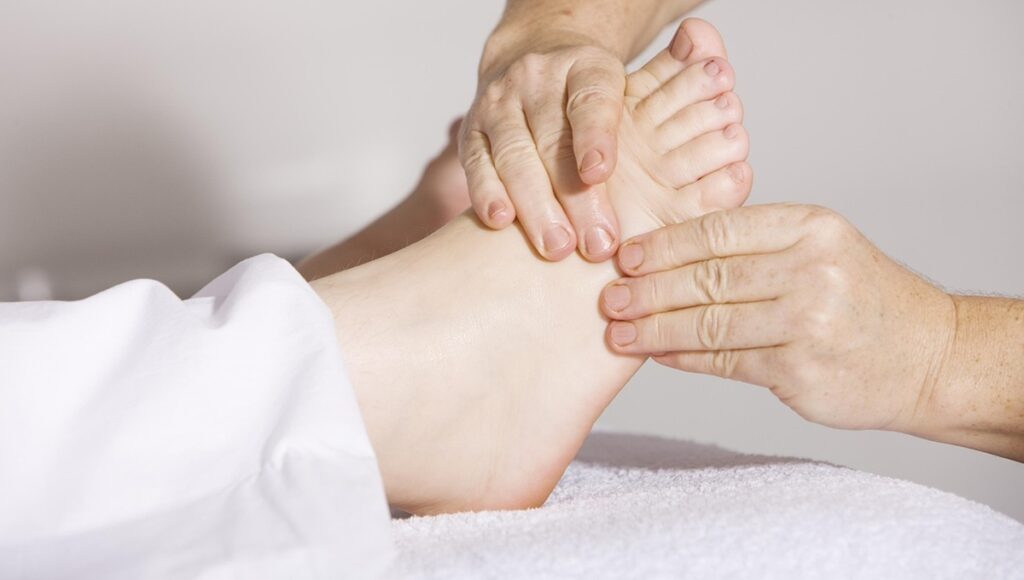
Non-Surgical Blog
Effective Exercises for Plantar Fasciitis Relief
April 16, 2025

Key Highlights
- Plantar fasciitis is a common condition that causes heel pain, particularly in the morning.
- Simple exercises can effectively alleviate plantar fasciitis pain and promote healing.
- Stretching exercises target the plantar fascia and calf muscles to reduce tension.
- Strengthening exercises improve foot and ankle stability to minimize stress on the plantar fascia.
- Consult Chattanooga Non-Surgical Orthopedics for personalized guidance and a comprehensive treatment plan.
Plantar fasciitis, a common source of foot pain, plagues countless individuals with discomfort and frustration. This condition arises from inflammation of the plantar fascia, a thick band of tissue running along the bottom of your foot, connecting your heel to your toes. The hallmark symptom is a stabbing pain in the heel, often most intense in the morning or after periods of rest.
Fortunately, targeted exercises can provide relief from plantar fasciitis pain and set you on the path to recovery.
Understanding Plantar Fasciitis
The plantar fascia is a strong, fibrous band that supports the arch of your foot, acting like a shock absorber. Imagine it as a taut bowstring, constantly under tension as you move. When subjected to repetitive stress or overuse, microscopic tears can occur in this tissue. It’s similar to repeatedly bending a credit card until it weakens and cracks.
This damage triggers an inflammatory response, leading to pain and stiffness. If left unaddressed, the inflammation can become chronic, resulting in persistent discomfort and limited mobility. Consulting Chattanooga Non-Surgical Orthopedics, foot and ankle specialists, is crucial for an accurate diagnosis and personalized treatment plan.
The Causes of Plantar Fasciitis
A convergence of factors can contribute to plantar fasciitis. Overpronation, where your foot rolls inward excessively when you walk or run, increases the strain on the plantar fascia. High-impact activities, like running and dancing, can also overload this delicate tissue.
Furthermore, tight calf muscles can exacerbate the condition, as they limit ankle flexibility and place additional stress on the plantar fascia. Other risk factors encompass obesity, improper footwear lacking arch support, and occupations demanding prolonged standing.
Addressing these risk factors is paramount in preventing and managing plantar fasciitis. Investing in proper footwear with adequate cushioning and arch support can provide much-needed relief. Stretching your calf muscles regularly and maintaining a healthy weight can also significantly reduce your risk.
Symptoms to Look Out For
The telltale sign of plantar fasciitis is a sharp, stabbing pain in the heel, often described as feeling like a knife is being driven into the bottom of the foot. This pain is typically most intense first thing in the morning or after a period of rest, gradually easing with movement as the plantar fascia loosens up.
As the day progresses, the pain may subside but can return with prolonged standing, walking, or exercise. Tenderness to the touch along the bottom of the foot, particularly in the arch of the foot, is another common symptom.
In some cases, the discomfort may radiate up into the arch of the foot or even the calf. If you’re experiencing any of these symptoms, it’s crucial to address them promptly to prevent the condition from worsening.
Key Exercises for Relief
Targeted exercises are fundamental to alleviating plantar fasciitis pain and restoring optimal foot function. These exercises focus on two key aspects: stretching and strengthening. Stretching helps elongate and improve flexibility in the plantar fascia and calf muscles, reducing tension and promoting healing.
Strengthening exercises target the muscles that support the arch of the foot, enhancing stability and reducing stress on the plantar fascia Chattanooga Non-Surgical Orthopedics professional team can guide you through the most appropriate exercises based on your individual needs and any underlying conditions.
Gentle Stretching Techniques
- Calf Stretch: Stand facing a wall with your hands shoulder-width apart. Step back with your affected foot, keeping your leg straight and your heel firmly planted on the ground. Bend your front knee and lean forward until you feel a gentle stretch in the calf of your back leg. Hold for 30 seconds, then switch legs.
- Towel Stretch: Sit with your legs extended and loop a towel around your injured foot. Holding the ends of the towel, gently pull your toes towards you, feeling a stretch along the bottom of your foot. Hold for 20 seconds and repeat three times.
- Step Stretch: Stand on a slightly raised surface, such as a book or the bottom step of a staircase. Hold onto a wall for balance and allow your heels to dip below the level of the step, feeling a stretch in your plantar fascia and calf muscles. Hold for 15-20 seconds and repeat several times.
Strength-Building Exercises
- Toe Curls: Place a small towel on the floor and sit with your feet flat on the ground. Using only your toes, try to crumple the towel toward you, hold for a few seconds, then release. Repeat this motion for 10-15 repetitions.
- Heel Raises: Stand with your feet hip-width apart. Slowly raise your heels off the ground, engaging your calf muscles. Hold for a few seconds before gently lowering back down. You should feel this exercise in your plantar fascia as well. Repeat for 10-15 repetitions.
- Marble Pickups: Scatter a handful of marbles on the floor. Sit in a chair and use your toes to pick up each marble, one by one, and place them into a small bowl. This exercise strengthens the muscles in your feet and improves your arch control. Repeat until you’ve collected all the marbles.
Conclusion
Understanding and addressing the root causes of plantar fasciitis through targeted exercises can significantly alleviate pain and discomfort. Incorporating gentle stretching techniques and strength-building exercises into your routine can improve flexibility and strengthen the affected area, promoting healing and preventing future issues.
Remember, consistency is key in managing plantar fasciitis effectively.
If you need personalized guidance or further assistance, don’t hesitate to get in touch with our experts at Chattanooga Non-Surgical Orthopedics for tailored advice and support in your journey towards relief.
Frequently Asked Questions
What Makes Exercise Effective for Plantar Fasciitis Relief?
Think of exercise as physical therapy for your feet. It stretches the tight plantar fascia, similar to using a rolling pin on dough, and strengthens the arch of your foot. This combined approach reduces stress on the sole of the foot, eases pain in your injured foot, and promotes healing.

Search our blog posts: